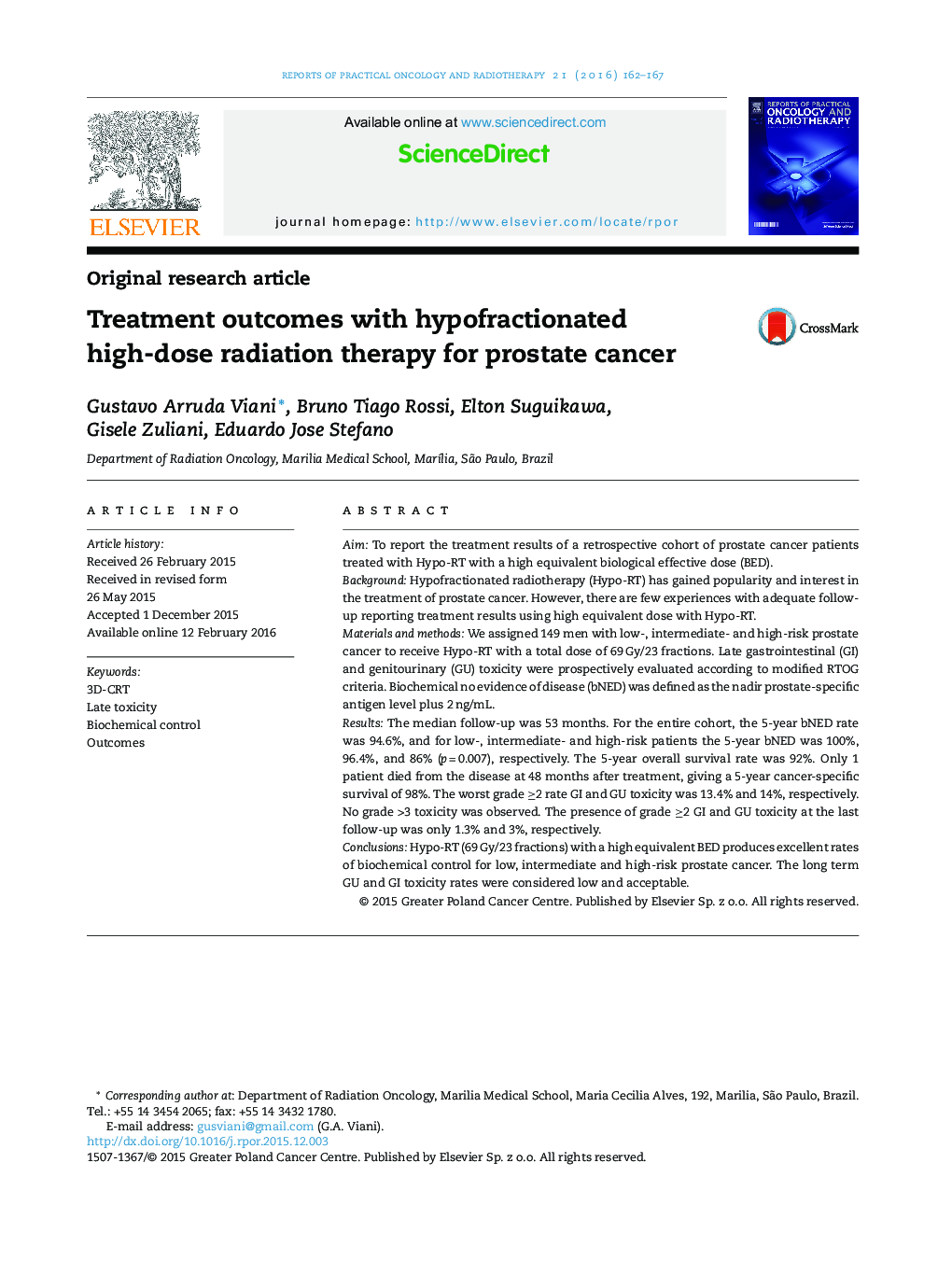| Article ID | Journal | Published Year | Pages | File Type |
|---|---|---|---|---|
| 1855525 | Reports of Practical Oncology & Radiotherapy | 2016 | 6 Pages |
AimTo report the treatment results of a retrospective cohort of prostate cancer patients treated with Hypo-RT with a high equivalent biological effective dose (BED).BackgroundHypofractionated radiotherapy (Hypo-RT) has gained popularity and interest in the treatment of prostate cancer. However, there are few experiences with adequate follow-up reporting treatment results using high equivalent dose with Hypo-RT.Materials and methodsWe assigned 149 men with low-, intermediate- and high-risk prostate cancer to receive Hypo-RT with a total dose of 69 Gy/23 fractions. Late gastrointestinal (GI) and genitourinary (GU) toxicity were prospectively evaluated according to modified RTOG criteria. Biochemical no evidence of disease (bNED) was defined as the nadir prostate-specific antigen level plus 2 ng/mL.ResultsThe median follow-up was 53 months. For the entire cohort, the 5-year bNED rate was 94.6%, and for low-, intermediate- and high-risk patients the 5-year bNED was 100%, 96.4%, and 86% (p = 0.007), respectively. The 5-year overall survival rate was 92%. Only 1 patient died from the disease at 48 months after treatment, giving a 5-year cancer-specific survival of 98%. The worst grade ≥2 rate GI and GU toxicity was 13.4% and 14%, respectively. No grade >3 toxicity was observed. The presence of grade ≥2 GI and GU toxicity at the last follow-up was only 1.3% and 3%, respectively.ConclusionsHypo-RT (69 Gy/23 fractions) with a high equivalent BED produces excellent rates of biochemical control for low, intermediate and high-risk prostate cancer. The long term GU and GI toxicity rates were considered low and acceptable.
